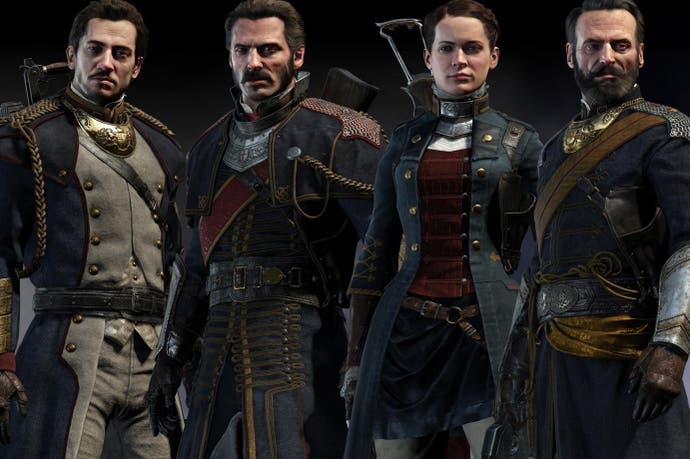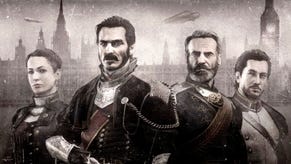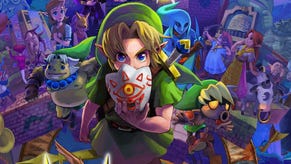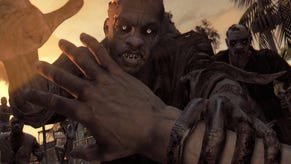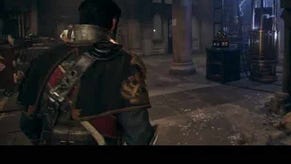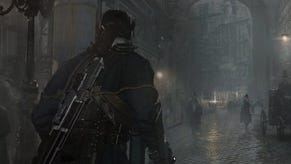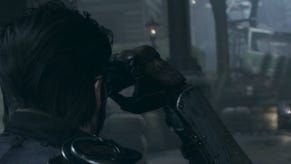The Order: 1886 review
One knight stand.
Eurogamer has dropped review scores and replaced them with a new recommendation system. Read the editor's blog to find out more.
In video games, the term 'cinematic' can cut both ways. It speaks of the grand sweep of Naughty Dog's Uncharted, where players are washed away in the tightly scripted matinee-idol action of Nathan Drake. It speaks, too, of the frictions that have existed since such lavishly animated Laser Disc adventures as Dragon's Lair and Space Ace, where players are pushed to the sidelines as the spectacle unfurls before them, asking for only occasional minor prompts.
Ready at Dawn's The Order: 1886, the first original home console game from a studio that made its name with portable versions of Sony's God of War, cuts a curious line between both concepts of cinematic gaming, finding shaky new ground between the choreographed shooting of Uncharted and the more prescribed, cut-scene-laden drama of Heavy Rain. The action never clicks and its dramatics fall consistently flat - but the spectacle they are slave to is unquestionably stirring.
The Order is a brutally filmic game. Like The Evil Within and Beyond: Two Souls before it, a 16:9 screen ratio isn't adequate to frame the cinematic ambitions of Ready at Dawn; rather, it's presented in 2.35:1, an approximation of CinemaScope that leaves big black bars at the head and foot of most modern televisions. Film grain and excessive motion blur mimic the soft static of celluloid - and, as a result, this is a more impressive game in action than in stills - making for a succession of sumptuously lit, breathtaking scenes.
The Order: 1886 is an incredibly handsome game - perhaps the finest-looking the new generation of consoles has provided to date - its world full of detail and art that's both striking and bold. The comic-book veneer on its Victorian London setting allows for intoxicating flights of fancy: a grandiose airship rendered exquisitely from its steelwork skeleton and taut canvas skin through to the gilded grandeur of its cabins; the foggy squalor of Whitechapel slums where whorehouses are awash with miserable human flotsam; or the sparkle of a Mayfair courtyard by night, its damp stone twinkled by gaslight. It's deeply impressive.
This is a 19th-century London patrolled by steampunk heroes working against a history that's folded in on itself, where The Crystal Palace's fiery destruction is brought forward some 50 years, and where Saucy Jack stalks the alleyways of East London. There's an obvious debt to Alan Moore's From Hell and The League of Extraordinary Gentlemen, though sadly the cues seem to have been taken from the dreary Hollywood adaptations rather than the source comics before being dumbed down further in service of The Order's lifeless, listless plot.
As cinema - and, seeing how much of the running time is given over to unskippable cutscenes and barely interactive QTEs, The Order positively begs to be assessed on such terms - The Order is a failure. As has become familiar with Sony's big-budget exclusives on the PlayStation 4, there's a lack of personality here, its absence more keenly felt when so much emphasis is placed on the narrative. Whereas the artists have gone to town with the backdrop, the writers have fumbled, wearing the period detail too lightly.

We're left with characters without any discernible character. The Order themselves, a collection of soldiers working to protect the realm and operating under the name of King Arthur's Knights of the Round Table, are a collection of hoary archetypes. There's Percival (old, wise, Obi-Wan-a-like), Lady Igraine (strict, stern, token love interest), LaFayette (French womaniser who talks just like David Cage) and yourself, Galahad (moustache, moody), all of whom swap dead, portentous exposition with each other as the plot trips up on itself.
What's frustrating are the glimpses of something more fulfilling that never go anywhere. The United India Company that you work against, a transparent spin on the East India Company, suggests a post-colonial narrative that's never fully explored, with every interesting thread abandoned, dangling, long before the climax. In the dim afterglow of the post-credits sequence, it's apparent that Ready at Dawn has wasted its wonderful premise on a sub-Nolan origins story, one in which po-faced minimalism is mistaken for something more profound, and where a franchise is half-heartedly set up with world-building that's hollow and bland.
If its cinematic pretensions falter, how does The Order play? It's a starchy, staunchly traditional game - as reserved, old-fashioned and steeped in slightly dusty traditions as the knights it portrays. Between the cut-scenes and QTEs that take up a bulk of The Order there's a superficially diverse game, though Ready at Dawn has constructed a Frankenstein of well-worn parts.
You'll push levers, pull pulleys and give a foothold to help your AI partner access new parts of a level. You'll rotate analogue sticks and feel for subtle vibrations as you unpick locks. You'll crouch through dark corridors, hiding from patrolling enemies in one-hit-fail stealth missions. Sometimes, as a treat, you'll get to investigate big empty rooms looking for documents in what's surely the most extravagant, expensive spin on the hidden object genre yet.
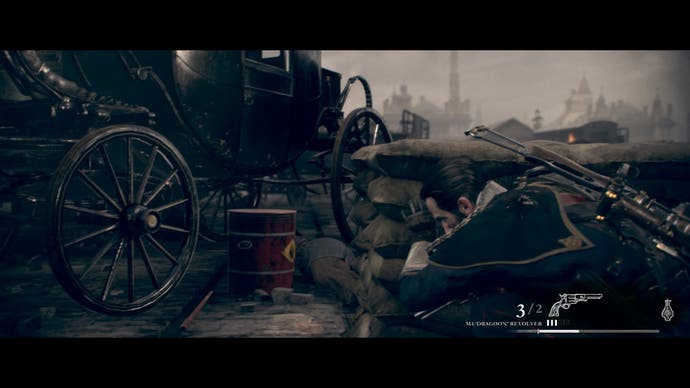
As a third-person shooter, The Order fares better - it's competent and enjoyable, if never quite spectacular. Your arsenal has a chug and bark that's befitting of the era, with pistols that snap and auto-rifles that fire like drills, and it's enlivened by a couple of sparky cameos from a lightning-spitting gun and a thermite rifle that emits clouds of explosive gas that can then be detonated by a secondary shot (and they're supplied by Nikola Tesla, a cameo that's swiped from Christopher Nolan's The Prestige).
The shoot-outs are one-note, although that note is full of pep - the handful of times that The Order places you in a small arena, it's keen to stuff it with glasses and bottles and furniture that shatters. Despite the fantasy underpinnings, you only ever come across human adversaries during the shooter sections - and, thanks to a quirk in the story that's never satisfyingly resolved, they're all cockneys and Irishmen who wear bowler hats while exclaiming 'Cor, blimey' (I kid you not) as they're grazed by your bullets. Later, in the tradition of many third-person shooters, some of the more stubborn foot-soldiers find metal hats to wear.
It's shallow fun while it lasts, but The Order feels dated before its time. Despite being the PlayStation 4's new poster child, the latest pretty face for the new generation, Ready at Dawn's truncated epic feels like a product of the year of its inception - a time when the world was in thrall to Uncharted 2 and Heavy Rain, and before the prescribed dramatics of Quantic Dream turned sour with Beyond: Two Souls. The result is an earnest game, sometimes disarmingly so. There are no levelling weapons, no branching narrative decisions, no litany of unlockables - and there's absolutely no reason to return once it's all over.
The Order: 1886 isn't a disaster, nor is it a particularly good game. It's a hollow diversion, entertaining but outmoded and caught somewhere between a medium it repeatedly fumbles and one it fails to effectively embrace.
